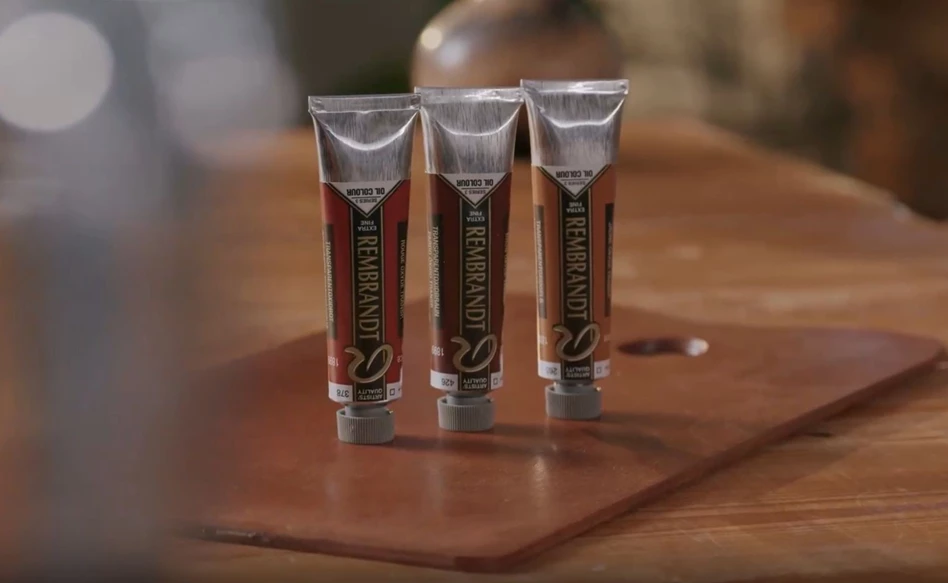
Transparent Oxides
Brown shades are an important part of painting. If you look at art history, it is evident that we once started painting using soil as pigments. You could say that browns are our basis, our roots. The transparent oxide shades in our collection may seem like ordinary browns, but nothing could be further from the truth.
In the video below, we show you a selection of our beautiful transparent oxide shades. Since the actual colours can be difficult to judge straight from the tube, each shade is mixed with a white, yellow and a blue shade to showcase its unique properties and undertones. This might help you select the right colours for your next artwork.
How to use transparent oxides
The most remarkable property of these oxide shades is their transparency. To keep this property when mixing transparent oxides into lighter colours, always use a white that is not fully opaque. This helps to somewhat preserve the properties of these shades. An opaque white overshadows the transparent pigment, giving it a different effect.
In your colour palette, these transparent oxides can also be used to darken different shades. The shade Transparent Oxide Brown, for instance, mixed with a bright red becomes a shade that offers depth and a soft, deep veil. The brightness of the red will tone down beautifully. Transparent oxides are often used to darken transparent shades without losing their depth or transparency.
Besides toning down colours, these shades are perfect to apply glazing techniques with; thin, transparent layers of paint built up to add depth and dimension to your painting.
Lastly, they can be mixed to create more vibrant and colourful blacks. For example, Transparent Oxide Brown mixed with Phthalo Blue Greenish (576) becomes a deep, dark, yet lively tone. This allows you to add colour to your paintings instead of flat black pigments. Shades like these are experienced by the viewer as deeper and more vibrant.
Assortment
The following colours were used in this video:
To highlight their unique properties, each shade was mixed with 104 Zinc White, 254 Permanent Lemon Yellow and 576 Phthalo Blue Greenish.
Other Oil Colour Blogs

Transparent Oxides
Oil Colour
Whites
Oil colour
Tonal Greys
Oil colour
Cadmiums and alternatives
Oil colour
Red shades
Oil colour
Blue shades
Oil colour
Green shades
Oil colour